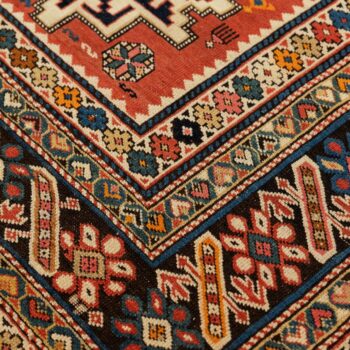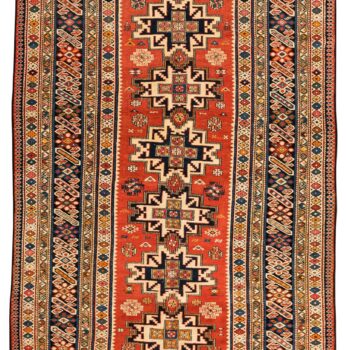Chichi
The ancient Chichi carpets were woven in a cluster of villages inhabited by Chechens, Azeris and Lesghis in the vicinity of the coastal city of Kuba in Azerbaijan along the Caspian Sea in the northwest Caucasus.
The warp of Chichi rugs is made with wool or a mixture of goat hair and wool. The weave is made with cotton, although rugs with weaves made of wool or a combination of wool and goat hair are also found. The pile is shiny, made with sheep’s wool and is left short on the rug, but at the same time, it is a pile that remains firm to the touch. The knot used is symmetrical.
The design of Chichi rugs is usually formed by a mosaic of rose windows or rows of geometric figures, most often stars or octagons spread across a blue field and flanked by a series of wide, symmetrical borders with geometric patterns. The edges are unique and characterize the pattern of Chichi rugs. They consist of bars alternating with colored flowers on a brown or black background.
Antique Chichi rugs, one of the most popular types of Kuba rugs – are coveted by collectors. Among the various styles of rugs identified as Caucasian, Chichi rugs stand out not only because they are among the finest knotted rugs of this genre, but because the artists developed unique designs and were skilled in the harmonious combination of colors.


Figalli Oriental Rugs
We do not sell rugs. We bring rare works of art to your home in the form of rugs.
Our services
You are Protected
Copyright © 2023 Figalli Oriental Rugs, All rights reserved. Desenvolvido por Agência DLB – Agência de Marketing Digital em Porto Alegre


